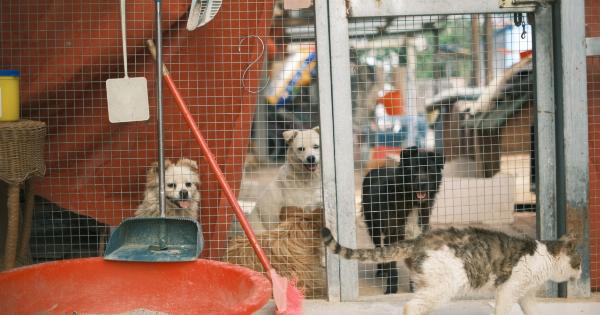Disciplining a dog is an essential part of dog ownership. A well-behaved dog is a joy to have, but an unruly dog can be a nightmare. Disciplining your dog does not mean hurting or punishing them.
Instead, it is about teaching them good behavior and setting appropriate boundaries. The following tips will help you master the art of disciplining your dog.
Understanding Your Dog
Before you start disciplining your dog, it is important to understand the root cause of their behavior. Most dogs misbehave because they are bored, anxious, or simply seeking attention.
Understanding why your dog behaves the way they do will help you develop appropriate discipline strategies.
Consistency is Key
Consistency is crucial when disciplining your dog. If you let your dog get away with bad behavior one day and reprimand them for it the next, they will be confused about what is expected of them.
Consistency in your discipline approach will help your dog understand what is and isn’t acceptable behavior.
Positive Reinforcement
Disciplining your dog does not always have to be negative. Encouraging good behavior with positive reinforcement is an excellent way to discipline your dog.
Positive reinforcement can involve rewarding your dog with treats, toys, or praise when they exhibit good behavior. Over time, your dog will learn that good behavior is rewarded and will be more likely to continue it.
Redirect Negative Behavior
When your dog exhibits negative behavior, it is important to redirect their attention to something more positive. If your dog is chewing on your shoe, redirect them to a chew toy. If your dog is jumping on guests, redirect them to a sit command.
This teaches your dog what behaviors are acceptable and helps them develop positive habits.
Avoid Physical Punishment
Physical punishment, such as hitting or kicking, should never be part of the discipline approach. Fear and intimidation are not effective ways to train your dog and can lead to more negative behavior.
Instead, use positive reinforcement and redirect negative behavior to encourage good habits.
Set Clear Boundaries
Setting clear boundaries for your dog is an important part of discipline. This involves establishing rules about where your dog can go, what objects they can interact with, and what behaviors are acceptable.
Make sure your dog understands these boundaries and enforce them consistently.
Be Patient
Disciplining your dog is a process that takes time and patience. Remember, your dog is trying to learn what is and isn’t acceptable behavior. It is your job to guide them through this process with consistent discipline and positive reinforcement.
Get Professional Help
If you are struggling to discipline your dog or have behavioral concerns, it may be helpful to seek professional advice. A dog trainer or behaviorist can provide guidance and support to help you develop an effective discipline approach.
Stay Calm
Finally, when disciplining your dog, it is important to remain calm and composed. Getting angry or frustrated will not help your dog understand what they have done wrong.
Instead, take a deep breath, address the behavior calmly, and redirect their attention to something more positive.





























